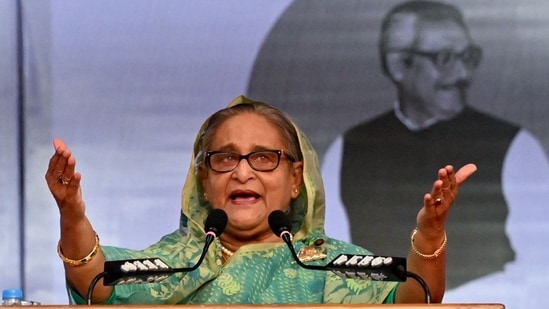Bangladesh Prime Minister Sheikh Hasina resigned and fled the country as angry student protesters, demanding her resignation, stormed her official residence the Gono Bhaban around 3 pm. This ends the Awami League and Shiekh Hasina’s 15 years in power.

Addressing the nation, Bangladesh army chief Waker-uz-Zaman announced that the military help in forming an interim government and appealed for peace to restore calm in the country. Taking full responsibility for the unprecedented violence over last few days, he said the Army will investigate all cases of killings by the armed forces.
Protests rock Bangladesh
Since the first week of July, Bangladesh has been witnessing series of violent protests over a controversial government quota system that reserved 30% of government jobs for the kin of 1971 Bangladesh Liberation War veterans. The government had appealed the high court’s decision to restore the system in the Supreme Court, which scaled back the reservation system to 5%.
Though the government accepted the decision, angry protesters, most among them students, continued to demand accountability for brutal killings and violence committed by the police and security forces. They blamed the ruling Awami League, and its students wing for partnering with the security forces to commit violence against protesters. Almost 300 people died in violent protests that continued despite the government imposing a nationwide curfew.
Why did Sheikh Hasina resign?
Hasina, who defended the quota system before the top court scrapped it, continued to blame the student wings of opposition parties for instigating violence which vandalised several state-owned establishments including the public broadcaster.
The prime minister accused the protesters of “sabotage” and connectivity services were cut off throughout the country to crush dissent. A curfew was imposed since Sunday evening for an indefinite period in the capital Dhaka. She said protesters who engaged in destruction are not students but criminals, who should be dealt with iron hands.
On Saturday, Hasina’s offer to talk with student leaders was turned down by the protest coordinators, who announced a one-point demand for her resignation.
The Awami League said the demand showed that the protests had been hijacked by the opposition Bangladesh Nationalist Party and the now-banned Jamaat-e-Islami.
On Sunday, the protesters called for a non-cooperation effort, urging people not to pay taxes and other bills. People were also urged to boycott work on Sunday, a working day in Bangladesh. Authorities shut off mobile internet in an attempt to quell the unrest, while the broadband internet was cut off briefly by Monday morning. It was the second internet blackout in the country after the protests turned deadly in July.
On Monday, protesters asked the citizens to join their “Long March to Dhaka”, a day after almost 100 people died in fierce clashes with security forces. The march managed to breach the security gates of the Prime Minister’s official residence around 3 pm, forcing Hasina to flee out of the country for safety. Later, the army chief announced that Sheikh Hasina has resigned, and the army will form an interim government.
(With inputs from agencies)





